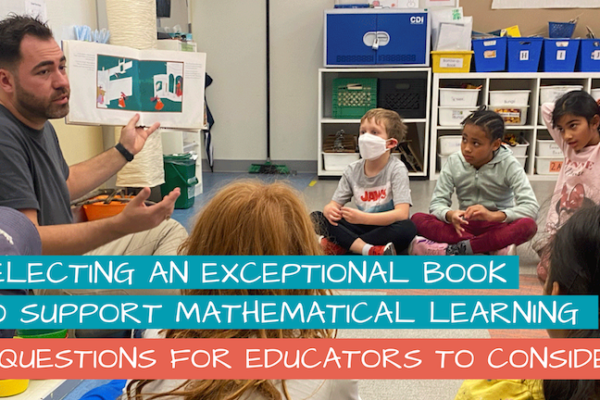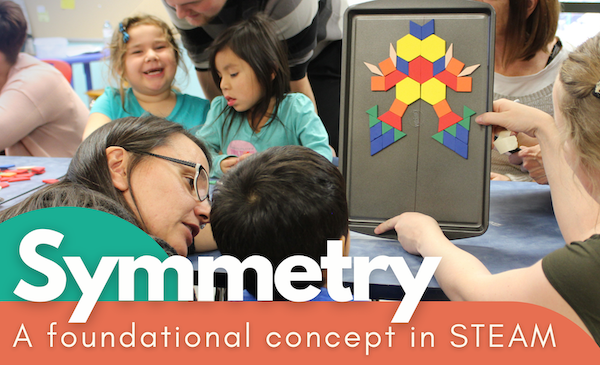David Osorio will often use storybooks to pique his student’s interest in mathematics. The Dr. Eric Jackman Institute of Child Study teacher has watched as children begin to relate to... read more →
Taking children outside to observe nature in winter has its challenges, but colder weather allows curious minds to contemplate the influence of factors like temperature and atmosphere. Feeling the cold... read more →
Focus on Symmetry Symmetry is a concept with wide-ranging applications in the natural and cultural worlds we inhabit. Pervasive in the arts, it serves as a foundational idea in STEAM... read more →
Spatial reasoning:A toolkit with lessons Spatial reasoning:A toolkit with lessons Young children’s capacity to reason spatially has amazed The Robertson Program for years. In our work with classroom teachers, we... read more →
Understanding place value is foundational to conceptualizing number It is imperative that children understand how one number relates to another when navigating our base-ten-dependent society. Yet, an alarming number of... read more →
Four quick and efficient assessments that help educators better understand the mathematical strengths and needs of students. Along with each assessment, we've suggested lessons available in our free math lesson library... read more →
Dr. Julie Comay explores how learning math is filled with joyful possibilities. In her message at this year’s meeting of the National Council for Teachers of Mathematics (NCTM), president Trina... read more →
Whole Number Bias and 3 Misconceptions about Fractions in Junior Math Whole Number Bias and 3 Misconceptions about Fractions in Junior Math Q&A: OISE Assistant Professor Dr. Zack Hawes explains... read more →
3 Misconceptions in Primary Science Taking time at the beginning of a science unit to allow students to share or document how they understand and relate to a topic is... read more →
Investigating Birds in Spring Investigating Birds in Spring To me, birds are a nearly perfect teaching tool. They offer us a form of natural play, sparking joy as one ventures... read more →










